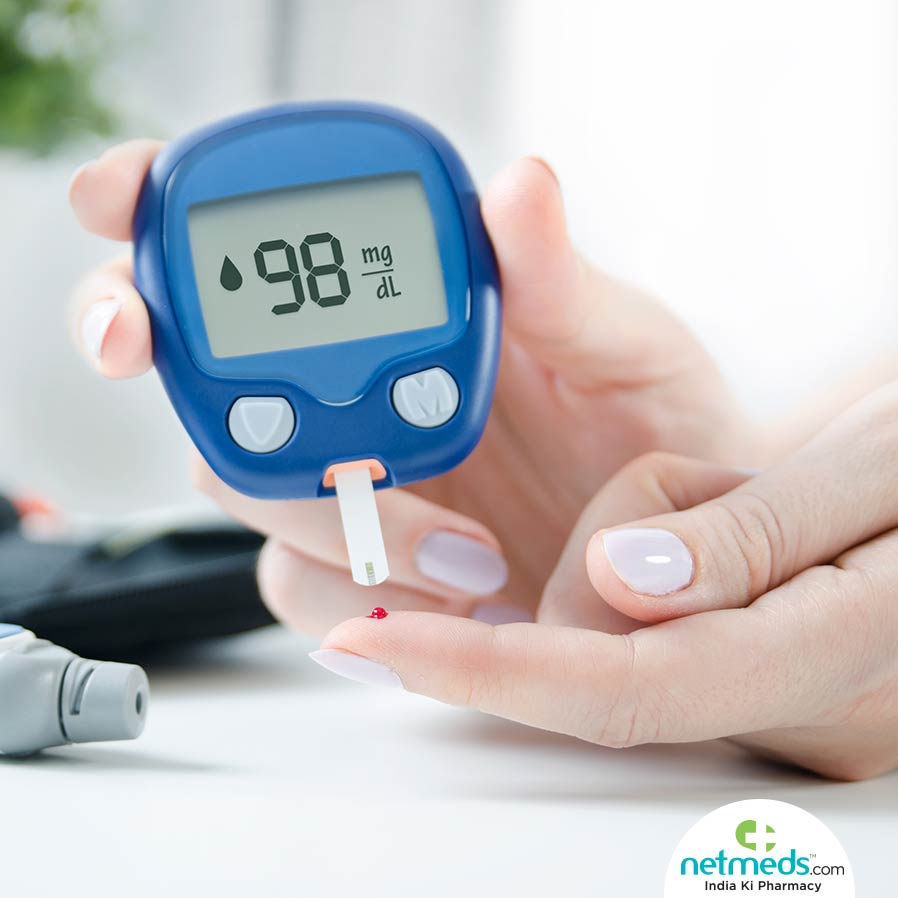People with diabetes must monitor blood sugar, also called blood glucose, to better manage their condition. Checking blood sugar periodically throughout the day can provide a picture of the effects that food, stress, medicines, and activity level have on blood glucose levels. With this information, a person with diabetes can stay healthier. Good blood sugar control can delay or even prevent serious complications of diabetes such as kidney failure and the consequences of nerve damage that can ultimately lead to amputation.
When you monitor blood sugar levels, you learn what the normal range of blood glucose is for you, and how far below or above that level you are. Your blood sugar level will give you an idea of how well your treatment plan is working.
How often you need to monitor blood sugar varies from individual to individual and should be guided by your doctor’s advice. For example, many people who take insulin need to test blood sugar three or four times per day, while other treatment regimens demand less frequent monitoring. When you are ill or keeping an irregular schedule, you may need to test more frequently.
The ultimate goal when you monitor blood sugar is to hit your ideal blood glucose target level, which your doctor will determine for you. If your blood glucose readings are not ideal, you may need to alter your medication dosage and diet.
Monitoring With Type 1 and Type 2 Diabetes
Blood sugar monitoring is important both for people with type 1 diabetes and type 2 diabetes.
- Type 1 diabetesis the result of an autoimmune disorder; your body’s immune system destroys the cells in the pancreas that produce insulin. Insulin is a hormone that enables your body to convert the food you eat into energy. People with type 1 always need to take insulin because their pancreas produces very little or none. Careful blood sugar monitoring is very important so that you take the right insulin dosage.
- Type 2 diabetes is a bit different in that your pancreas does produce insulin, but your body doesn’t respond properly to it, or you don’t produce enough of the hormone to meet your body’s needs. Diet, weight loss, andincreased activityare enough to help some people with type 2 diabetes keep blood sugar at target levels. Others may need oral medications or extra insulin. Regular glucose monitoring is the only way to know how well your blood sugar is being controlled and what sort of medications you need.
Monitor Blood Sugar the Right Way
Monitoring with a traditional glucose meter involves taking a tiny sample of your own blood, usually by pricking a finger with a sharp instrument called a lancet. (A newer alternative, called continuous glucose monitoring, does not involve pricking your finger, but instead uses a hair-thin probe inserted just under the skin in the upper arm area.)
You’ll need a glucose meter, test strips, and sterile finger lancets.
Here are the steps to take:
- 1.Start with clean, washed, and dried hands.
- 2.Get the glucose meter ready according to the manufacturer’s instructions.
- 3.To avoid or lessen pain, pick a different finger each time, and test on the side of the fingertip, instead of the top.
- 4.Check the instructions for your finger-pricking or lancet device and then press the button to draw a drop of blood.
- 5.If you have trouble getting a drop of blood, hang your hand down, squeeze, and shake. You can also try washing your hands in warm water to get the blood flowing.
- 6.Dot the blood on your test strip and then put it in the meter. Follow the instructions carefully to get accurate results.
- 7.Note the results in your log book. This step is very important because it will help you and your doctor to know how much insulin or other medications you need. It also helps you monitor any trends and adjust your diet.
Diabetes Double-Check: Meters and Monitoring Techniques
After you’ve checked your glucose level hundreds or even thousands of times, you may think you’re an expert. But the American Diabetes Association reports that studies show even veteran testers can make mistakes. Just to be sure, you should occasionally do a blood sugar check in front of your health care provider or diabetes educator. Both can offer tips to strengthen your skills.
Your meter should be checked, too, to make sure it’s still accurate. Read the instructions to find out how to calibrate the device. If you think there might be a problem, you can have your physician check your blood sugar and then compare the results. If there’s more than a 20 percent difference, you’ll need to have the meter checked out.
Monitoring blood sugar takes effort, but if done correctly, you’ll be in far better control of your diabetes and your future.














